Everything you need to know about hot peppers
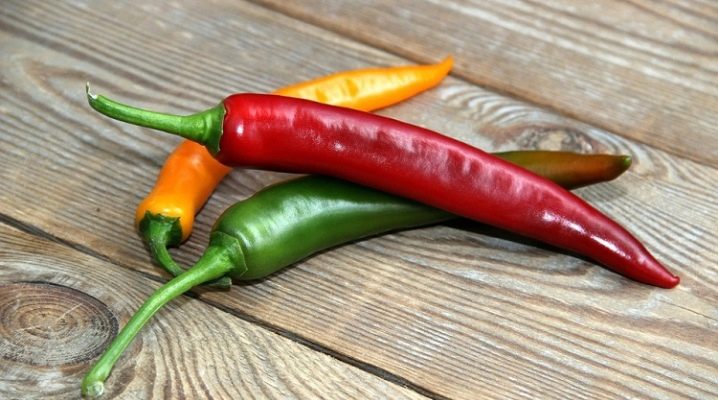
No kitchen in the world can do without such a spicy ingredient as pepper. In one form or another, red or black pepper in varying quantities is present in a huge list of various dishes. At the same time, there are many names, including bitter, spicy, chili and others.
It is interesting to find out the reason why they are so hot, as well as to know everything there is to know about their severity. It is worth noting that not everyone knows about the existence of a special scale, according to which the main characteristic of the product in question is determined in the appropriate units of measurement.

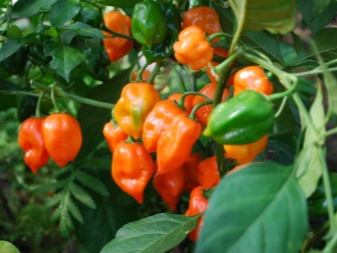
How and in what is it measured?
Initially, it should be noted that the first person to measure the degree of pungency of hot pepper, or more precisely, the pungent substance in it, was the chemist and pharmacist Wilbur Lincoln Scoville. It was in honor of this American scientist that the corresponding scale was named, in which the level of pungency is displayed. And what makes pepper so hot is capsaicin. In its pure form, it can actually leave a burn on the skin and is not washed off with water. It is important to note that the specified substance is widely used in the production of external medicines, as well as gas cans and even special ship paint. By the way, its name capsaicin comes from the Greek word "kapto", which means "to bite." Naturally, the concentration of this substance directly determines the pungency of the peppers.
By itself, capsaicin, which is an alkaloid, has a direct effect on certain thermoreceptors. They, in turn, send signals to the brain that indicate a sharp and significant increase in temperature. As a result, upon contact with a burning substance, the human body believes that it begins to burn. But in reality, nothing of the kind is happening. It turns out that in this way the brain is simply misled.
However, this does not mean that overly spicy food does not pose a potential health hazard.
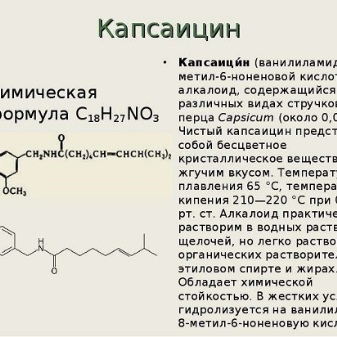
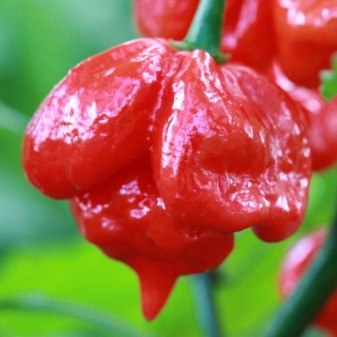
The measure of pungency is the ECU (SHU), that is, the units of the Scoville scale. At one time, this scientist suggested using the specific gravity of the already described capsaicin in their composition when determining the pungency of peppers. At the same time, analyzing the features and results of the first studies in this direction, it is worth focusing on the following important points.
- The standard (a kind of starting point) was Bulgarian, that is, sweet pepper.
- The prototype was infused with a solution of ethyl alcohol.
- The resulting pepper tincture was diluted with sweet water until the burning sensation completely disappeared. At the same time, the corresponding taste had to be confirmed by at least three out of five assistants to Wilbur Scoville.
- The total volume of water used to dilute the tincture was divided by proportions in proportion to the latter.
At the final stage, the results were entered into a table. It is important to consider. That 1 of the mentioned parts of water corresponded to 1 ESS.
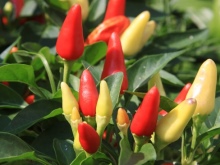
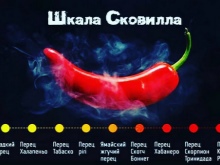

It was in this way that the scientist was able to explore all the types of pepper available to him at that time. The result of the work done was the compilation of a scale of severity based on the data recorded in the tables. The very technique for determining the level of pungency was later refined by Mikhail Tsvet, who successfully used chromatography in his studies.However, even after such an update of the classifiers, only the surname of the pioneer, that is, Scoville, remained in the name of the acuity scale.
It is worth noting that in the absence of this or that product, or a dish of hot pepper, it is useless to look for its parameters in the described scale. By the way, this category of food products, oddly enough, includes wasabi, as well as "Gorloder", "Ogonyok" and many other sauces and seasonings. The fact is that they are prepared on the basis of onions, garlic, mustard or horseradish. That is, there is no pepper in the composition, and, therefore, capsaicin.
It is important to take into account that if in a person the receptors are not accustomed to the obvious acuteness, then it is extremely undesirable to add products to food only with an increased concentration of a pungent substance. It will be more correct to regulate this indicator in dishes with the help of softer types of pepper. It is also important to remember that sweet milk, ice cream and fatty foods that effectively break down capsaicin will help neutralize the burning sensation in the mouth.
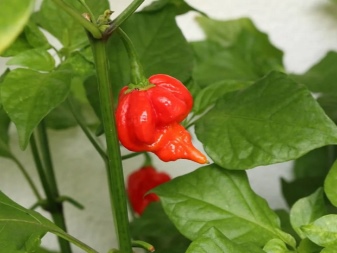
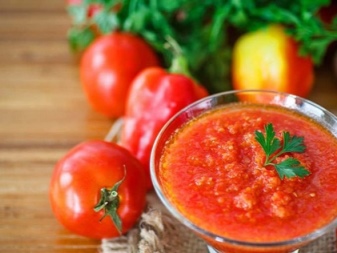
Hottest peppers on the Scoville scale
Taking into account the indicators of pungency, displayed in the table, the classification of pungent vegetables is carried out. So in 1912, according to the results of the work of Scoville himself, the rating of the hottest peppers was topped by habanero with 577,000 ECU. Later, plants belonging to the corresponding family were examined using specialized equipment. In parallel, the list of varieties was constantly expanding. Thus, specimens with indicators exceeding 100,000 ESSh began to be added to the group of especially burning ones. It should be noted that such peppers are usually used in the production of self-defense products and insecticides.
The most popular representatives of the most acute ratings include the following varieties:
- habanero;
- cayenne;
- Tabasco;
- Thai "Bird's Eye";
- burning Jamaican;
- Scottish.
However, these common peppers are not more worthy of attention. It is worth noting that a rather active struggle is constantly going on for the honorary title of the most acute and burning. So, breeders are constantly working on breeding varieties that rise higher and higher in a kind of standings, the role of which is assigned to the Scoville scale. By the way, the leaders of such ratings often end up in the legendary Guinness Book of Records, which automatically increases demand for them and increases sales at a record.


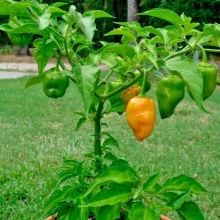
The current list of the top 10 hottest peppers, starting with the leader, can be presented as follows.
- Pepper with the mysterious name "X", the pungency of which is a record 3 180 000 units on the Scoville scale. Since 2019, it is considered the most acute in the world. According to experts, in the near future nothing threatens his championship and honorary title. This "monster" was created by Ed Curry, who is the only owner of the seeds of this culture, which is a pepper lantern. The scientist, in collaboration with a limited number of partners, launches sauces and other products based on his searing creation.
- "Dragon breath" - Hot Pepper 2.5 Million ESS, created by Neil Price with the participation of specialists from the University of Nottingham. The variety was developed as a source of the main active ingredient for antiseptic ointments. Fully ripe fruits have an orange-red hue and miniature size (no more than a nail).
- "Carolina Reaper" - pepper with pungency in the range of 2.3 million USH in the period from 2013 to 2019 was the leader in the ranking of the most acute and even ended up in the Guinness Book of Records. It is not recommended for an untrained person to consume it fresh, since the concentration of capsaicin in this pepper is very high.
- Trinidad Moruga - This type of hot vegetable, with indicators of 1.2 to 2 million ESS, can be found, according to the name, in Trinidad and the Moruga region. Its main feature is that the pungency is felt not immediately after biting the fruit, but over time.At the same time, the corresponding sensations persist for a very long time.
- "7 Pot Dougle" - The pungency index of this specimen ranges from 1.853 to 2 million units on the Scoville scale. By the way, the variety owes its name to the ability of just one pepper to spice up 7 pots (Pot). It differs in a spicy, fruity, sweetish taste, but it is not recommended to try it raw. It is generally accepted that the hottest peppers should be red. This variety is an exception as its ripe, shriveled fruits are dark brown in color.
- "Naga Morich" - Pepper, which is also called "Ghost" or "Ghost", has a pungency in the range of 1 to 1.5 million ESS. For almost 12 years (from 1994 to 2006), this variety bore the title of the most acute in the world. It has a sweet and sour aftertaste with a slight hint of smoked meats and is well suited for preparing various meat dishes.
- "Trinidad Scorpio Butch-T" - Pepper, named after its creator, scientist Butch Taylor, has a pungency ranging from 800,000 to 1,463,700 Scoville units. Before you experience the scalding effect of the pods, you can have time to feel their fruity taste.
- "Naga Viper" - with a pungency from 900 thousand to 1 382 118 ESSH in 2011, this rather rare variety of pepper from foggy Albion was recognized as the most pungent. It was bred as a result of crossing several species at once with cross-pollination. You can notice sweetness and fruity notes in the taste, and the sharpness of the pepper appears rather slowly, but it is felt at the same time for a very long time. The variety can often be found in various hot sauces.
- "1 Pot Brain Strain" - a variety with a pungency ranging from 1 to 1.35 million ECU, was bred 11 years ago by American specialists in North Carolina. The wrinkled pods have an unusual, intricate shape. When cutting the citrus-scented fruit, capsaicin oil can be seen.
- Dorset Naga - a variety of the "Naga Morich" pepper described above, which has a pungency of 876 to 970 thousand units on the Scoville scale. This variety differs from its “relative” in its sweet taste, in which fruity and even a little floral notes are noticeable.
Another distinctive feature is the long-term gradation of pungency. Fresh and as a component of sauces it can bring you to tears.

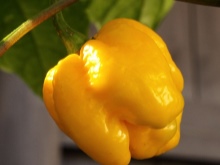
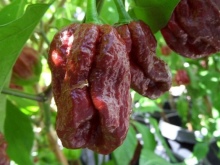
How to reduce the severity?
Often, for one reason or another, one has to deal with an excessive content of spicy components in different dishes. Even the most experienced chef can overdo it with hot pepper. However, in such situations, one should not immediately despair, and write off the creation itself into the category of hopelessly spoiled. There are a number of fairly effective techniques that can significantly reduce the severity. Here's what you can try.
- Acidify the cooked dish. A spoonful of vinegar or lemon juice can help neutralize hot peppers. In this case, it is very important to know the measure and observe the proportions, since the line between “saved” and “ruined everything” is much thinner than it seems. By the way, an alternative to lemon juice is fresh tomatoes, which can have a similar effect.
- Add sour cream, just 2 tablespoons of which can soften the taste of the food. There are situations when this product may simply not be at hand. In this case, sour cream can be replaced with natural yogurt.
- Moderately increase the proportion of other ingredients in the dish. But it is worth considering that this option for saving the latter is relevant when using simple recipes.
- Prepare a vegetable side dish in addition to the main course. Tomatoes, cucumbers and other vegetables, which contain a large amount of water, as well as herbs, will help soften the effect of the burning substance.
- Add a teaspoon of sugar with a few drops of vinegar. This method of saving the dish is relevant in situations where it turned out to be a little sharper than we would like.
In addition to all of the above, it is worth noting that in some situations, experienced chefs advise not to follow the recipe strictly and blindly. In particular, it is recommended to taste prepared peppers before adding.
It is important to remember here that all the products described have different degrees of pungency. By the way, a similar phenomenon can be encountered even by plucking two pods from one bush.

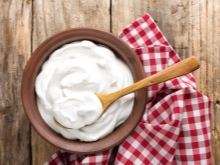
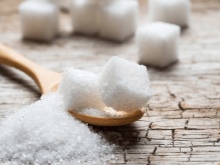
Safety engineering
Unfortunately, many people underestimate the potential danger of hot peppers. But it is important to remember that the most vulnerable areas are the face and fingertips, where the most sensitive receptors are located. And the key point is that when the skin comes into contact with capsaicin, the human body automatically reacts like a burn.
With this in mind, it is strongly recommended to use rubber gloves when preparing dishes that include hot peppers in the list of ingredients. In parallel, it is required to avoid touching the face.
It is important to remember that capsaicin is most concentrated in grains and skins. After completing work with such spicy foods, you should thoroughly wash your hands and all used kitchen utensils.
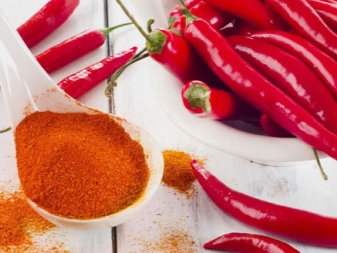

If pepper comes into contact with particularly vulnerable areas of the body, immediate action is required.
- With a strong burning sensation of the skin of the hands, it is not so difficult to extinguish the "fire". Any dairy products that are at hand will help neutralize the irritating factor in the form of the action of capsaicin. It is best to use milk, kefir, as well as sour cream and yogurt.
- Eye contact with hot peppers is a very unpleasant thing., but you should not panic excessively in such situations. Initially, it is recommended to make a compress based on milk or vegetable oil. Then you need to rinse your eyes with plenty of water and drip anesthetic drops. After these first aid measures, you should seek medical attention.
- In situations where a person has eaten too hot pepper, it is important to immediately forget about water and any soft drinks. It makes no sense to drink this spicy product with them. The most effective remedy will be milk, its proteins and fats effectively neutralize capsaicin.
It is worth focusing on one unique moment. The fact is that with regular contact with products containing the described burning substance, the sensitivity of the corresponding receptors is significantly reduced. Over time, the skin will react much more calmly to contact with hot peppers. Nowadays, there are no problems in order to determine in advance the degree of hotness of a particular type of pepper. To do this, just use the Scoville table.
However, it is important to remember that even with a relatively low level of pungency, cooking experiments must be performed with the utmost care. And also do not forget about the basic safety rules.
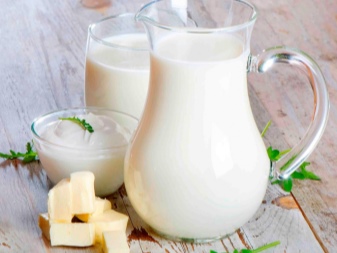









The comment was sent successfully.